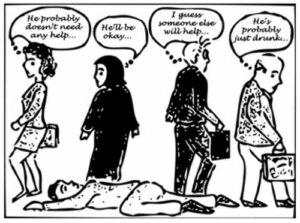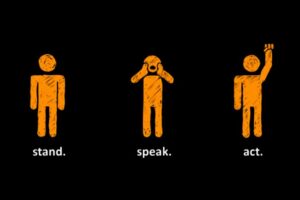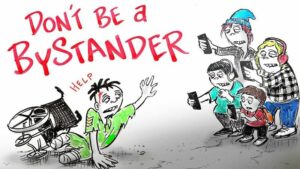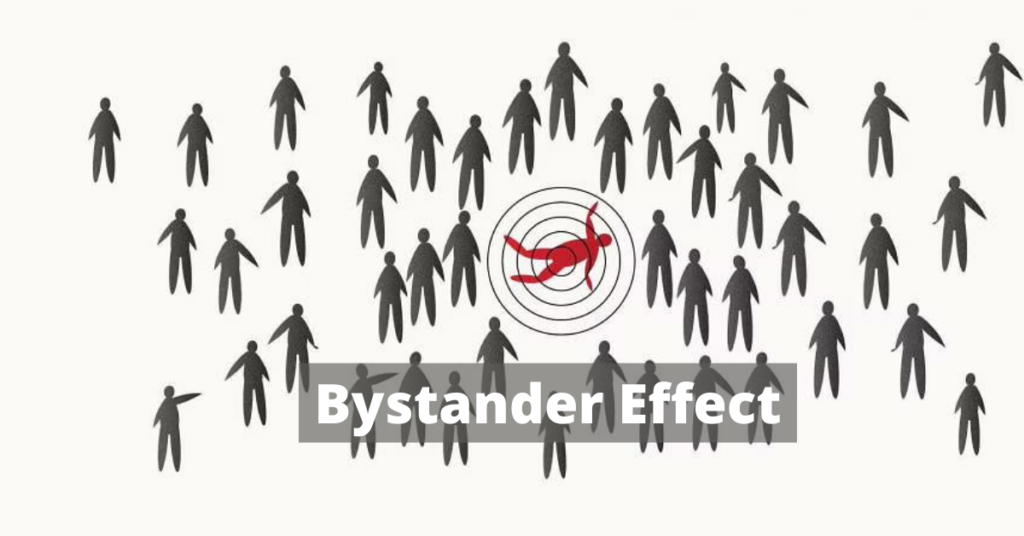The bystander effect is when people are less likely to help in an emergency situation. The more people who are present, the less likely someone will help. It’s called the bystander effect because it’s like “watching” from afar.
Contents
What Is Bystander Effect?
 The bystander effect, also known as bystander apathy, is when people are less likely to help in an emergency situation. When people don’t do anything and it’s like they’re watching the emergency happen from afar. There are many reasons for the bystander effect. One reason is that people may not know what to do or how to help. Another reason is that people may be afraid of getting hurt themselves. And finally, people may not want to get involved in someone else’s problem.
The bystander effect, also known as bystander apathy, is when people are less likely to help in an emergency situation. When people don’t do anything and it’s like they’re watching the emergency happen from afar. There are many reasons for the bystander effect. One reason is that people may not know what to do or how to help. Another reason is that people may be afraid of getting hurt themselves. And finally, people may not want to get involved in someone else’s problem.
Despite these reasons, it’s important to remember that every single person has great potential to help. When the bystander effect occurs, it’s important to remind people that they can and should help: “Every single person has great potential to help when an emergency situation arises, and bystanders should not be afraid to take action.”
Luckily, studies have shown that proper training and education on how to handle emergencies may decrease the bystander effect! So what can you do if you see someone in need of help?
If you see someone who needs help, the best thing to do is to take action. This may include calling 911, pulling a fire alarm, or shouting for help. You should also offer aid by checking if the person needs immediate medical attention and getting first-aid supplies, such as bandages and bottled water, from a nearby store. Remember not to put yourself in danger while helping!
Causes Of Bystander Effect

The bystander effect occurs because people fear that by helping, they’ll put themselves in danger. People may be afraid of getting hurt as well as just not knowing how to help. Another possible cause is the diffusion of responsibility, meaning one person thinks someone else will help and no one ends up doing anything. Finally, social loafing occurs when people assume someone else is doing something about the emergency and no one takes any action.
All of these reasons boil down to the idea that people don’t want to get involved. But remember, it’s important for everyone to take action when they can! Bystanders should not be afraid to help, and they may be the difference between life and death.
Situational Factors That Contribute To Bystander Effect
The bystander effect happens when people see someone in need of help and then decide to do nothing. It can be caused by fear, not knowing what to do, or the diffusion of responsibility. The bystander effect can be decreased by educating people on how they can help in emergencies. Making it easy for people to help, and encouraging social norms that tell people it is ok to help each other. When people see someone in need of help, they should take action and not be afraid to get involved.
It is important for people to take action when they see someone in need of help. The bystander effect happens because people are afraid, don’t know how to help, or think that someone else will do something about it. All these reasons can be prevented by educating the public on what to do and making first-aid supplies available nearby, as well as encouraging social norms that tell people it’s ok to get involved with each other during emergencies. Take action whenever you see a person who needs your help.
How To Overcome Bystander Effect?
One way to overcome the bystander effect is through proper training and education. This means that people will be more likely to help if they know what to do in an emergency situation. Another way to overcome the bystander effect is by increasing the number of people who are helping. When more people are involved, the sense of social loafing decreases, and people are more likely to help. Finally, bystanders can be encouraged to help through positive reinforcement. This means rewarding people for taking action in an emergency situation.

So, what can you do if you see someone in need of help?
The best thing to do is take action! This may include calling 911, pulling a fire alarm, or shouting for help. You should also offer aid by checking if the person needs immediate medical attention and getting first-aid supplies from a nearby store. Remember not to put yourself in danger while helping!
If you see someone who is unresponsive, yell for help and tap them gently on the shoulder to check if they are unresponsive. If you cannot roll them over or see that they are not breathing, call 911 right away! Let emergency responders know how long it has been since the person stopped responding.
Get involved with emergency response training near you! It’s important to know what to do when an emergency happens, and there are many ways to get involved in emergency response training. You can find this training through your local fire department or Red Cross chapter. There, you’ll be able to learn how to handle emergencies like fires, car crashes, and natural disasters. So if you want to be prepared for any kind of emergency, getting involved in emergency response training is the best way to do it.
How To Decrease Likelihood Of Bystander Effect?
There are a few things we can do to decrease the likelihood of the bystander effect happening. One way is to educate people on what they can do when they see someone in need of help. Another way is to make it easy for people to help, such as having first-aid supplies nearby. Finally, we can create a social norm that encourages people to help in emergency situations.
Take Action
 The best thing to do is take action! This may include calling 911, pulling a fire alarm, or shouting for help. You should also offer aid by checking if the person needs immediate medical attention and getting first-aid supplies, such as bandages and bottled water, from a nearby store.
The best thing to do is take action! This may include calling 911, pulling a fire alarm, or shouting for help. You should also offer aid by checking if the person needs immediate medical attention and getting first-aid supplies, such as bandages and bottled water, from a nearby store.
What To Do If They Are Unresponsive?
If the person is unresponsive, you should yell for help. Say their name and tap them gently on the shoulder to check if they are unresponsive. If you cannot roll them over, or see that they are not breathing, call 911 right away! Let emergency responders know how long it has been since the person stopped responding.
Get involved with emergency response training near you.
It’s important to know what to do when an emergency happens, and luckily there are many ways to get involved in emergency response training. You can find this training through your local fire department or Red Cross chapter. There, you’ll be able to learn how to handle emergencies like fires, car crashes, and natural disasters. So if you want to be prepared for any kind of emergency, getting involved in emergency response training is the best way to do it!
In conclusion, there are several factors that may contribute to the bystander effect. In order to decrease the likelihood of the bystander effect occurs. It is important to educate people on what they can do when they see someone in need of help, make it easy for people to help by having first-aid supplies nearby. And encourage social norms that suggest helping each other.
Tips for Coping With Bystander effect
The bystander effect is a phenomenon that people who see someone in need of help hesitate to intervene. The bystander effect can be avoided by educating people on what to do when they see someone in need, making it easy for them to intervene, and encouraging the idea that we should all help each other during emergencies.
Some tips for coping with the bystander effect:

- Educate yourself on what to do when you see someone in need of help.
- Make it easy for people to help by having first-aid supplies nearby.
- Encourage social norms that tell people it is ok to help each other.
When people see someone in need, they should take immediate action and not be afraid to get involved.
Educating yourself on what to do during an emergency can help you know how to react if you are ever in that situation. Having first-aid supplies nearby makes it easy for people to help, and encouraging social norms tells people it’s ok to be the one who gets involved with others during emergencies. Take immediate action whenever you see someone in need and don’t be afraid to help.
A Word From Mantra Care
Your mental health — your psychological, emotional, and social well-being — has an impact on every aspect of your life. Positive mental health essentially allows you to effectively deal with life’s everyday challenges.
If you are looking for affordable Online Counseling MantraCare can help: Book a trial therapy session


